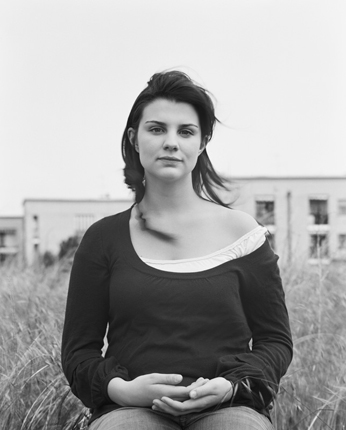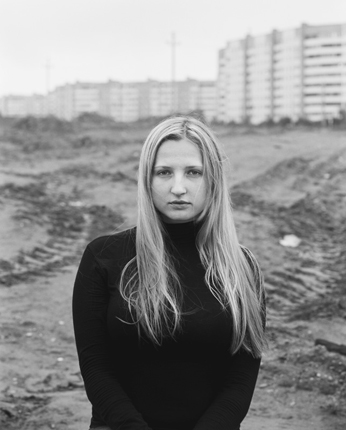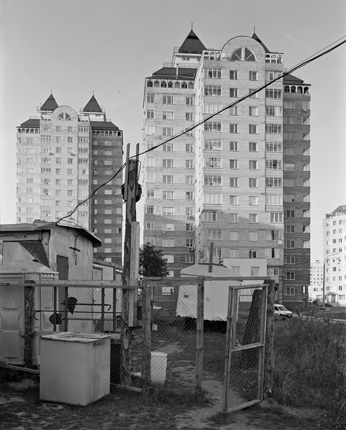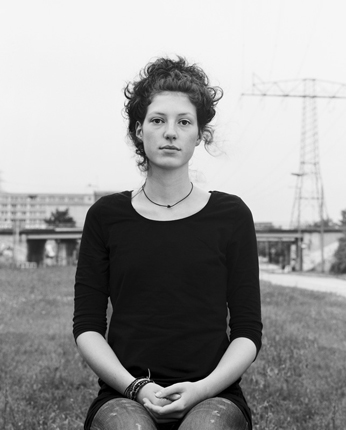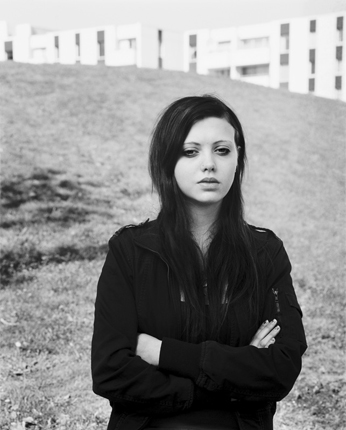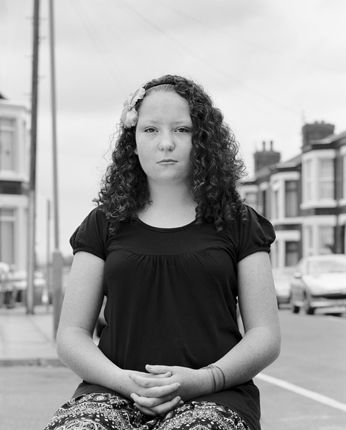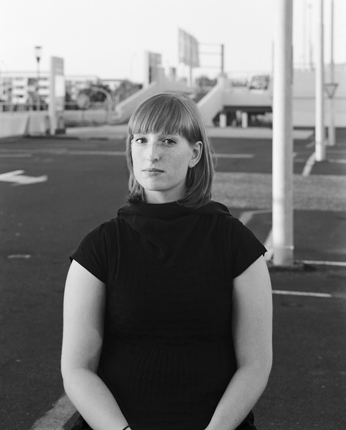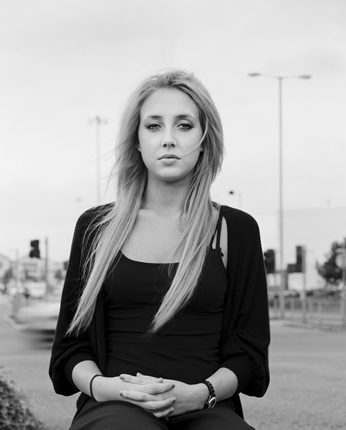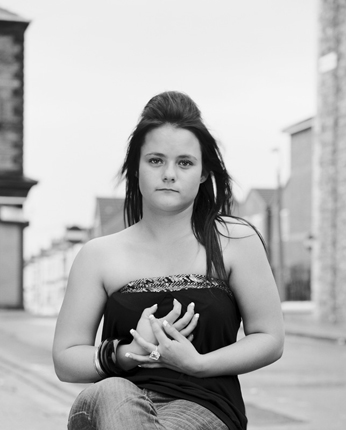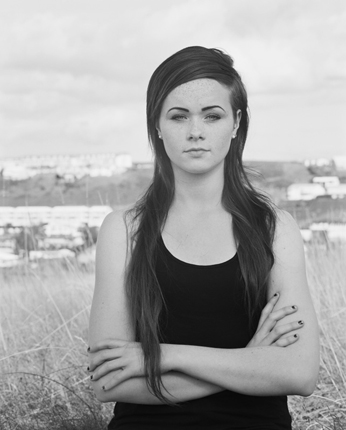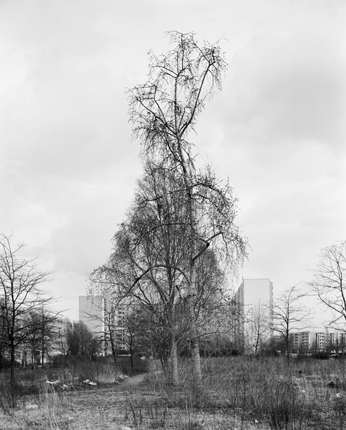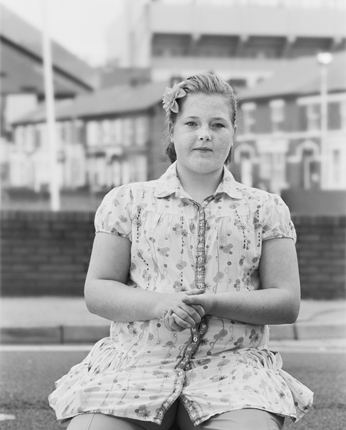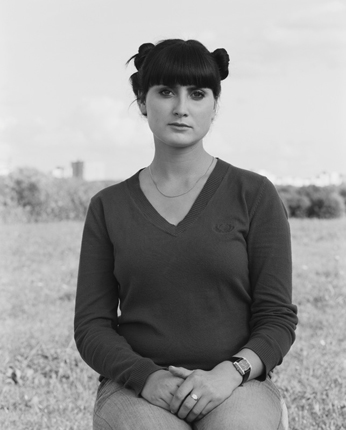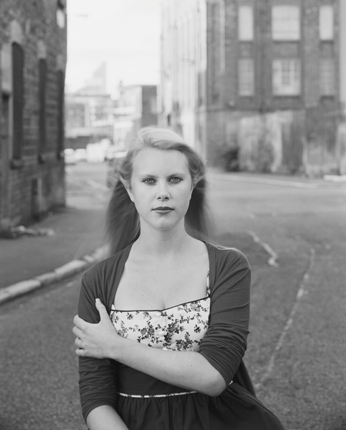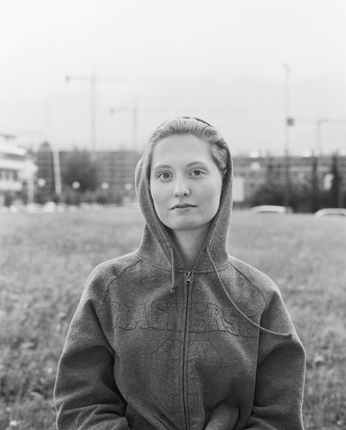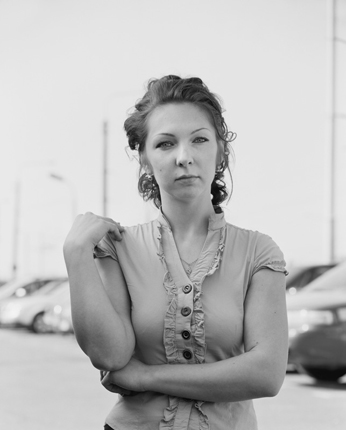In our project we created a convergence of two things poised in transition.
One is the suburb, which is no longer a village but not quite a city. The other
is the girl who is not a child anymore but not yet a woman. Both are on their
way to becoming something else–––the suburb and the girl–––and this is what we
wanted to document.
We were in Florence, Liverpool, Reykjavik, Minsk, and Berlin, five very different
cities, but at every location we followed the same procedure. We found
a location where many people pass by: a bus stop, a supermarket, a youth center.
Then we waited until we saw a face that seemed special to us. We approached
these girls and asked them to come over to the camera that we had set up, a largeformat
camera with plates, a tripod, and a black cloth–––something utterly unfamiliar
today.
In all these cities we had the same chair with us, and every one of the girls sat
on it. It is a simple chair, actually more of a stool. It has a small seat and
no back, nowhere to lean or rest your arms, but there is a little support just for
the head. The chair does not force the body to sit in a certain way; it offers
a lot of freedom, but at the same time it leaves you exposed. These two things
were important. We wanted to find out how the surroundings impacted the individual,
and if the suburban environment was visibly reflected in its inhabitants.
Regardless of where we were, we always experienced the suburbs as a place that
everyone wants to leave. During the day people leave to go to work, and at night
they return just to sleep. In the evening they go away to shop, go for a stroll,
meet with friends, or go out. In order to make something of their lives, they
leave forever.
We spent many days in each city, and naturally we noticed the differences between
them. In Reykjavik the entire city is a suburb because it only has a tiny old
city center surrounded by a wide swath of new buildings, many of which are empty.
In Florence the suburb has retained a certain flair; there are cafeÅLs and delicatessens.
In Berlin, where we set up in the socialist era apartment blocks in
Marzahn, the architecture does not differ much from that of Minsk, except,
in Minsk, construction is going on everywhere. New buildings and new streets are
being built, and the city is eating its way into the countryside. In contrast,
entire streets in Liverpool are deserted. Windows and doors have been sealed
shut with steel plates. There is barbed wire everywhere. The greatest contrast
was between Liverpool and Minsk; nevertheless, there too all roads lead out
of and not into the suburb.
We did not have any preconceived ideal for the girls we selected. We did not want
to photograph models. We looked for faces that you notice at second glance,
that you can't forget, and for this they did not necessarily have to be beautiful
in today's sense of the word. Still, none of the girls found it strange that
we photographed them as the Mona Lisa of the suburbs. They sat on the chair, and
we told them that we were interested in more than just a snapshot and that we
would have to make a longer exposure than they are perhaps used to. From then
on they just concentrated on sitting and looking. They understood that it was
then only about them.
We took the girls out of their daily routines for twenty-five minutes, but when
they stood up again, something had happened to them. Something had changed. It
was as if they suddenly understood that they could be someone important, someone
special. Maybe it takes another person looking at you and giving you the sense
that there is something to see, and maybe this happens too seldom for the girls
in their given environments–––someone looking at them the way we did.
We have both been photographers for so many years, but this project is our first
joint undertaking, the first that bears both our names.

